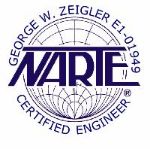Lack of Concerns About Bonding, Grounding and Protecting Communication Cables Entering a Facility
Many people are unaware of the damage that low voltage communication cables can inflict on electrical equipment within a facility. The National Electrical Code requires the bonding of these cables shields to the grounding electrode system of the facility. Any other communication cable shields on the compound are also required to be bonded to the grounding electrode system of the facility. (Examples: Antenna coaxial cable, external coaxial cameras, etc.).
All off-premise telephone metallic cable shields as well as cable television cable shields are also required by the National Safety Code and other national recognized standards to be bonded to the power utility’s multi-grounded neutral conductor.
Chapter 7 and Chapter 8 of the National Electrical Code contains most of the bonding requirements of communication cables entering and located inside of a facility.
Communication cables entering the building from different sides are more prone to be improperly bonded or not bonded at all to the grounding electrode system of the facility.
The vast majority of communication cables entering a facility in the United States are not protected from lightning strikes and power surges.
Almost every facility in the United States has communications cables entering the building and connected to the most voltage susceptible equipment in the building. When these cables are not properly bonded and protected even unwanted surges that are as low as 15-20 volts can cause communication equipment not to function properly. When these communication cables are not grounded at all, lightning voltages and other power surges can travel on the cable shields of these cables into the building and then have to find their own path to earth. That path usually is found via voltage susceptible equipment in the building. Depending on the voltage, the voltage susceptible equipment will either sustain partial or total damage.
The bonding, grounding and protection of the communication cable shields are usually the responsibility of the party suppling the communication service. If they do not properly bond, ground and protect your equipment it will fail. In almost all states the only responsibility that the service provider has is after you notify them that their communication cables lacked proper bonding and grounding is to come back to the site and redo there bonding and grounding. All cable protection is the responsibility of the facility owner or user as the case may be. All equipment losses and downtime are the responsibility of the facility occupant.
Here are some communication locations that need to be properly bonded, grounded and protected.
- 110/220V AC Power Supply Module
- Active optical networks (AON)
- CSM (Control and Switch Module)
- ELM (EPON Link Module, PON card)
- Ethernet Passive Optical Network (EPON)
- Fiber to the Home (FTTH)
- Gigabit Ethernet Passive Optical Network (GEPON)
- Gigabit Passive Optical Network (GPON)
- Network Interface Device (NID)
- Optical Distribution Network (ODN)
- Optical Line Terminal (OLT)
- Optical Network Terminals (ONTs)
- Optical Network Unit (ONU)
- Passive Optical Networks (PON)
- Redundancy Protection -48V DC Power Supply Modules
« Back to Blog






Comments